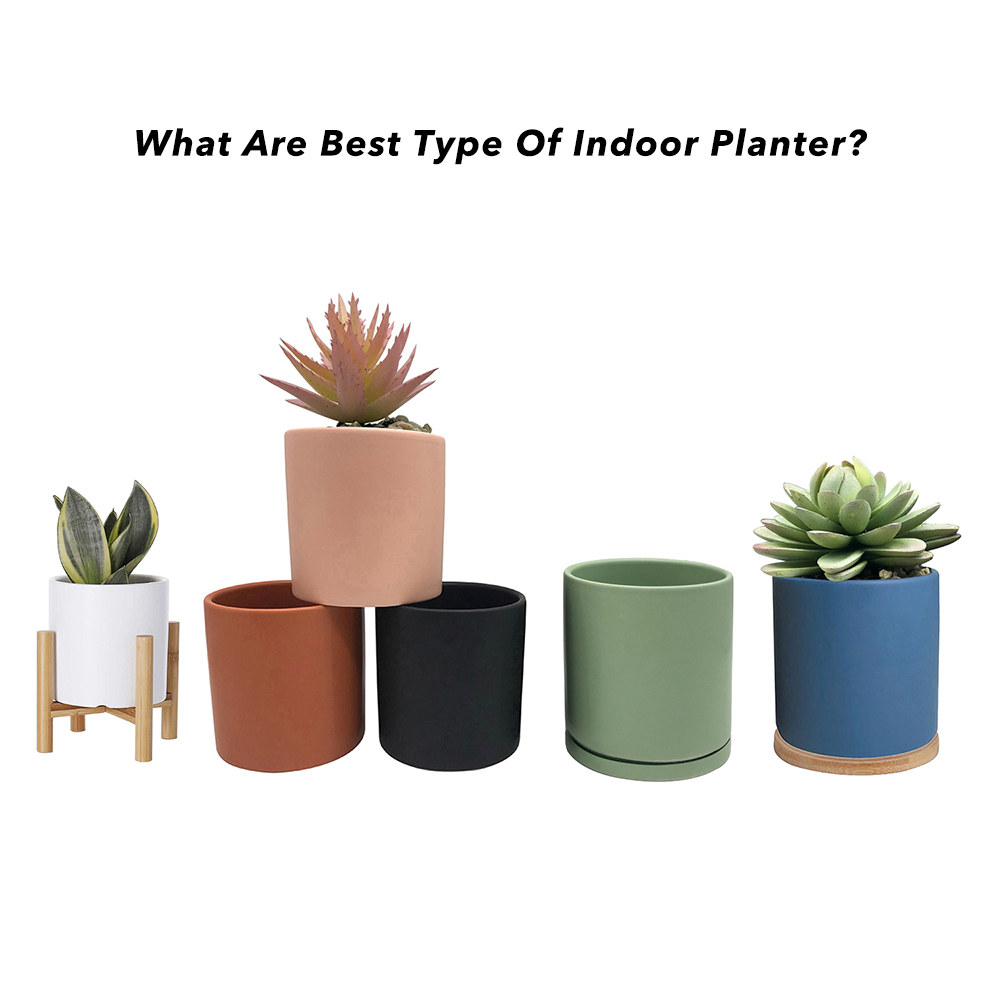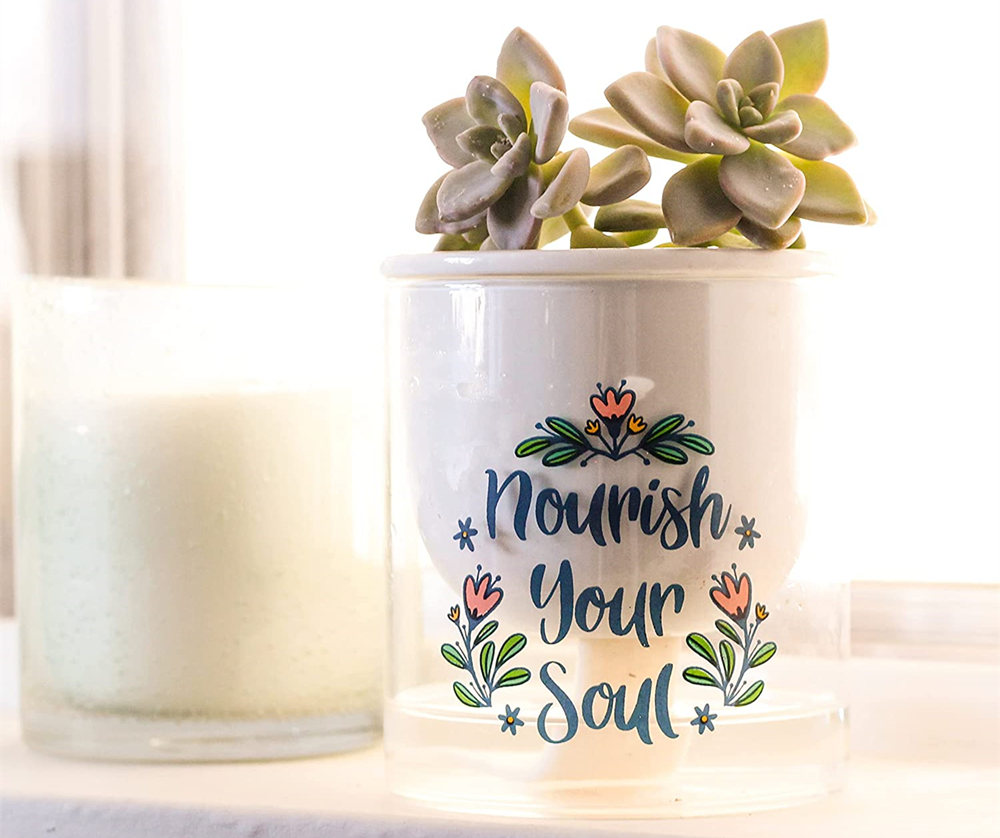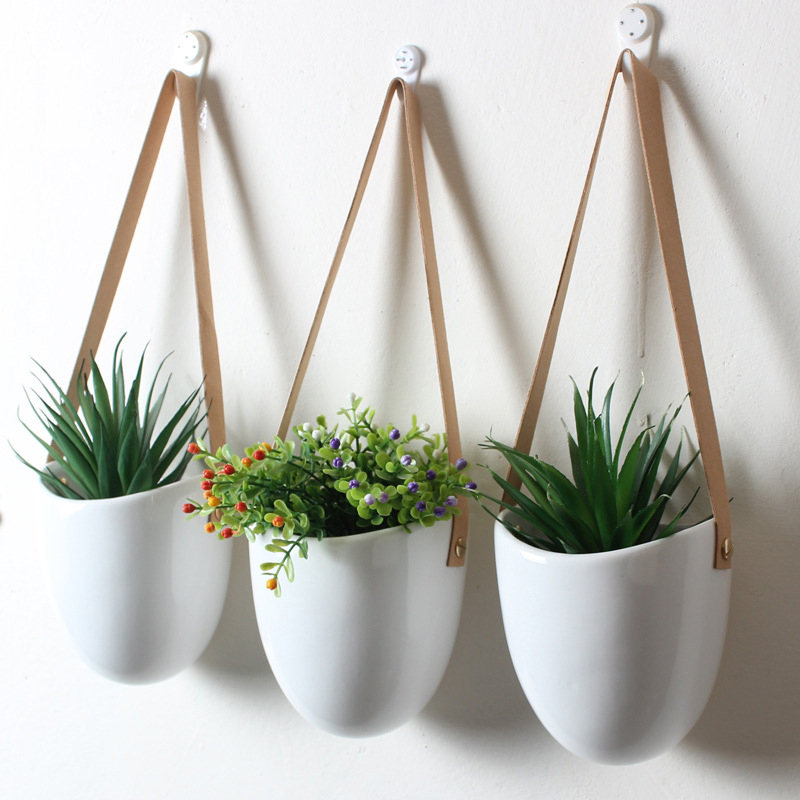What Are Best Type Of Indoor Planter?
Time of issue: 2024-04-07 17:13:24
Introduction:
Indoor plants not only beautify our living spaces but also contribute to our well-being by purifying the air and creating a sense of tranquility. Choosing the right indoor planter is essential for the health and growth of your plants, as well as for complementing your home decor. With a plethora of options available, from traditional clay pots to modern ceramic designs, it can be overwhelming to determine the best type of indoor planter for your needs. In this comprehensive guide, we'll explore the various types of indoor planters, their advantages and disadvantages, and provide tips for selecting the perfect one for your indoor greenery.
What Are Best Type Of Indoor Planter?
In our quest to bring the beauty of nature indoors, choosing the right indoor planters plays a pivotal role. Not only do they serve as vessels for our beloved greenery, but they also contribute to the overall aesthetic and well-being of our indoor environments. With a plethora of options available, ranging from classic terracotta pots to modern self-watering systems, finding the best type of indoor planter can be a daunting task.
Terracotta Pots: Timeless Elegance
Terracotta pots have stood the test of time for good reason. Their rustic charm and porous nature make them an excellent choice for indoor plants. The porous surface allows for better airflow to the plant's roots, preventing waterlogged soil and promoting healthy growth. Additionally, terracotta's ability to absorb excess moisture helps regulate soil moisture levels, reducing the risk of overwatering. These classic pots are available in various sizes and shapes, making them versatile options for any indoor space.
Ceramic Planters: Style Meets Function
For those looking to add a touch of elegance to their indoor oasis, ceramic planters are the way to go. Available in an array of colors, patterns, and finishes, ceramic pots offer endless possibilities for personalization. Their non-porous surface retains moisture more effectively than terracotta, making them ideal for plants that prefer consistently moist soil. However, it's essential to ensure ceramic pots have drainage holes to prevent water from accumulating at the bottom, which can lead to root rot.
Self-Watering Planters: Convenience at Its Best

Busy plant parents rejoice – self-watering planters are here to make your life easier. These innovative containers feature a reservoir that holds water, allowing the plant to absorb moisture as needed through capillary action. This self-regulating system helps prevent both over and under-watering, ensuring your plants stay hydrated without the hassle of daily watering. Self-watering planters come in various styles and materials, from sleek modern designs to more traditional options, making them suitable for any indoor setting.
Hanging Planters: Maximizing Vertical Space

When floor space is limited, why not take your plants to new heights with hanging planters? These space-saving solutions not only add visual interest but also help purify the air by bringing greenery to eye level. Whether you opt for macramé hangers for a bohemian vibe or sleek metal baskets for a modern look, hanging planters are sure to elevate your indoor decor. Just be sure to choose lightweight pots and secure ceiling hooks properly to prevent accidents.
Planter Boxes: Bringing the Outdoors In
For those with a green thumb and a love for gardening, planter boxes offer a unique way to cultivate indoor greenery. These long, narrow containers are perfect for growing herbs, succulents, or small flowering plants along windowsills or countertops. With proper drainage and a well-balanced potting mix, planter boxes can transform any indoor space into a flourishing garden oasis. Consider incorporating herbs like basil, mint, or rosemary for both culinary and aesthetic appeal.
How To Arrange Indoor Plants Like A Pro
Creating a visually stunning indoor plant arrangement can transform your space into a lush oasis that not only brings nature indoors but also elevates the ambiance of your home. To achieve that polished, professional look, it's essential to consider factors like height variation, leading lines, and color coordination.
Utilize Height to Your Advantage
One of the most effective ways to add interest to your indoor plant arrangement is by playing with height. Mixing plants of varying heights creates depth and dimension, making the display more visually appealing. Start by selecting a focal point, such as a tall floor plant or a hanging vine, and then complement it with shorter plants or trailing specimens to fill out the arrangement. This layering technique adds visual interest and creates a dynamic composition that draws the eye upward, making the space feel larger and more dynamic.
Look for Leading Lines
Incorporating leading lines into your indoor plant arrangement can guide the viewer's eye and create a sense of flow and cohesion. Consider the natural lines and shapes of your plants, such as the graceful curves of a trailing vine or the angular structure of a succulent rosette. Arrange your plants in a way that follows these lines, leading the viewer's gaze from one plant to the next. Additionally, incorporating elements like shelves, plant stands, or wall-mounted racks can help create visual lines that enhance the overall composition of your indoor garden.
Keep It Colorful
Color coordination is another crucial aspect of creating a professional-looking indoor plant arrangement. Consider the hues of your plants' foliage and flowers and how they complement or contrast with one another. Opt for a cohesive color scheme that ties the arrangement together, whether it's a harmonious blend of greens and blues or a bold mix of contrasting shades. Incorporating plants with variegated foliage or colorful blooms can add pops of color and visual interest to your arrangement, creating a vibrant focal point in any room.
Do indoor planters need drainage holes?
For indoor gardening enthusiasts, the question of whether indoor planters need drainage holes is a perennial topic of discussion. While some advocate strongly for the necessity of these openings, others argue that they are not essential for successful indoor gardening.
The Importance of Drainage Holes
Advocates for drainage holes in indoor planters emphasize their role in preventing waterlogged soil and root rot. When excess water accumulates in the bottom of a planter without drainage holes, it can lead to oxygen deprivation in the root zone, hindering plant growth and health. Drainage holes allow excess water to escape, ensuring that the soil remains well-aerated and that roots have access to the oxygen they need to thrive. Additionally, drainage holes help flush out salts and minerals that can accumulate in the soil over time, preventing nutrient imbalances and promoting overall plant vigor.
Considerations for Plants and Watering Habits
The need for drainage holes in indoor planters can vary depending on the types of plants being grown and the watering habits of the gardener. Plants that are sensitive to overwatering, such as succulents and cacti, generally benefit from pots with drainage holes to prevent waterlogged soil. Conversely, moisture-loving plants like ferns and tropicals may tolerate pots without drainage holes, provided that they are watered carefully to avoid excess moisture buildup. Ultimately, the decision to use planters with or without drainage holes depends on the specific needs of the plants being grown and the gardener's watering practices.
Alternative Drainage Solutions
For those who prefer the aesthetic appeal of planters without drainage holes, there are alternative solutions to ensure proper drainage and prevent water-related issues. One option is to use a layer of gravel or pebbles at the bottom of the planter to create a reservoir for excess water to collect. This can help prevent the soil from becoming waterlogged while still allowing for adequate drainage. Another option is to use a pot liner or cache pot with drainage holes inside a decorative outer pot without drainage holes. This allows for easy removal of excess water while preserving the appearance of the planter.
What Are Problems Of Common Houseplant?
As any plant parent knows, maintaining indoor greenery comes with its fair share of challenges. From yellowing leaves to pesky pests, keeping your houseplants happy and healthy requires a keen eye and a bit of know-how.
Yellowing Leaves
Yellowing leaves are often a sign of overwatering, underwatering, or nutrient deficiencies. To troubleshoot, check the soil moisture levels and adjust your watering frequency accordingly. Ensure that your plant is receiving adequate light and consider fertilizing with a balanced plant food to address nutrient deficiencies.
Dropping Leaves
Dropping leaves can be caused by sudden changes in temperature, overwatering, underwatering, or insufficient light. Assess your plant's environment and make adjustments as needed to provide stable conditions. Prune away any dead or damaged foliage and monitor your watering habits to prevent further leaf drop.
Discolored Leaf Tips or Edges & Curling Leaves
Discolored leaf tips or edges, along with curling leaves, are often indicative of inconsistent watering or low humidity levels. Ensure that your plant is receiving the right amount of water and consider placing a humidity tray or using a humidifier to increase moisture levels around the plant.
Distorted or Misshapen Growth
Distorted or misshapen growth can be caused by pests such as aphids, spider mites, or thrips feeding on the plant's tissues. Inspect your plant closely for signs of infestation and treat with insecticidal soap or neem oil as needed to control the pests.
Dull Leaf Color or Bright Colors Fading to Green
Dull leaf color or fading bright colors can be a sign of nutrient deficiencies, particularly nitrogen or iron. Consider fertilizing your plant with a balanced fertilizer or a specific formulation designed to address the identified deficiency.
Weak, Spindly Growth
Weak, spindly growth is often a result of insufficient light. Ensure that your plant is placed in a location where it receives adequate indirect sunlight or supplement with artificial grow lights to promote healthy growth.
Tiny Flying Bugs, Sticky or Shiny Residue on Foliage & Nearby Surfaces
Tiny flying bugs, along with sticky or shiny residue on foliage and nearby surfaces, are common signs of a pest infestation, such as fungus gnats or whiteflies. Treat the affected plant with an insecticidal soap or neem oil, and consider using sticky traps to capture adult insects and prevent further spread.
Conclusion
In conclusion, the best type of indoor planter ultimately depends on your personal preferences, as well as the specific needs of your plants and space. Whether you prefer the timeless elegance of terracotta pots, the versatility of ceramic planters, or the convenience of self-watering systems, there's a perfect planter out there for everyone. So, let your creativity flourish as you embark on your journey to greenify your indoor sanctuary with the perfect planters for your beloved botanical companions.
RECENT POSTS
- The Impact of Ceramic Materials in Energy-Efficient Buildings: Benefits and Applications
2025-12-04
- Top 7 Ceramic Cookware Health Benefits: Why It’s a Safer Choice for Your Kitchen
2025-12-04
- How to Clean Ceramic Planters and Improve Their Lifespan?
2025-11-17
- 15 Best Ceramic Holiday Gift Ideas for 2025: Thoughtful, Elegant & Heartfelt
2025-11-17
- Stoneware vs Porcelain vs Earthenware: Quick Decision Guide
2025-10-09
- Are Ceramic Glazes Food Safe? The Truth Behind the Shine
2025-10-09
- Christmas Decoration Trends That Wow Every Guest
2025-09-18
- Halloween Decoration Trending Ideas with Ceramics For 2025-26
2025-09-18










